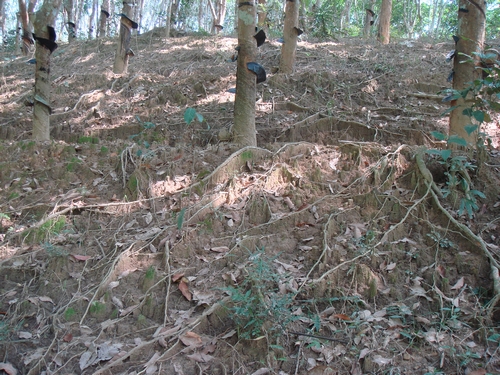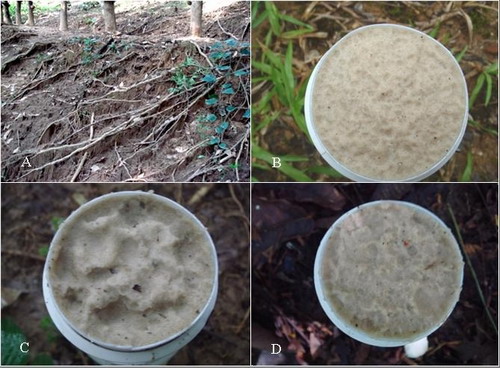In Xishuangbanna, one of China’s most biodiverse regions, landscape has changed dramatically during the past three decades due to the conversion of tropical rainforest to rubber plantations. In steep areas, terraces are often constructed before planting rubber trees, which causes two important changes in the soil: (1) the soil in the bench terraces is destabilized; and (2) the unvegetated riser faces are more vulnerable to erosion than the original condition. Unfortunately, few studies have documented the nature and intensity of erosion on bench terraces. Prof. LIU Wenjie and his colleagues of Xishuangbanna Tropical Botanical Garden (XTBG) conducted a study in Menglun (21°5′39″N, 101°15′55″E) of Xishuangbanna to evaluate the influence of conversion of tropical rainforest to rubber plantation on potential splash erosion rate and actual splash erosion rate. Their main objective of the study was to assess the influence of forest type on the splash erosion of rainwater input after its passage through the canopy. The tropical rainforest (dominated by Pometia tomentosa and Terminalia myriocarpa) and rubber plantation (Hevea brasiliensis) were selected to conduct the field experiment. Splash erosion rate (the amount of the disturbed soil per unit source area that was mobilized by rainsplash) was monitored in the control and rubber plantation stands within a 5 m× 20 m plot. Over the total period of observation, the average potential splash erosion rate was 2.1 times higher in the rubber plantation than in the open, while for the rainforest it was only 1.2 times higher than in the open, suggesting that the rubber plantation canopy greatly increased the rainsplash erosion. The average actual splash erosion rate was 2.0 times higher in the rubber plantation than in the rainforest, demonstrating that the rainforest was more effective in controlling splash erosion. The actual splash erosion rate was considerably lower in the terrace bench than in the riser bank in the rubber plantation, indicating that the riser bank was more sensitive to raindrop splash. The research results clearly showed that conversion of tropical rainforest to rubber plantation had a negative effect on controlling splash erosion. The study entitled “The effects of conversion of tropical rainforest to rubber plantation on splash erosion in Xishuangbanna, SW China” has been published online in Hydrology Research. 
Soil erosion in rubber forest (Image by Liu Wenjie) 
|


